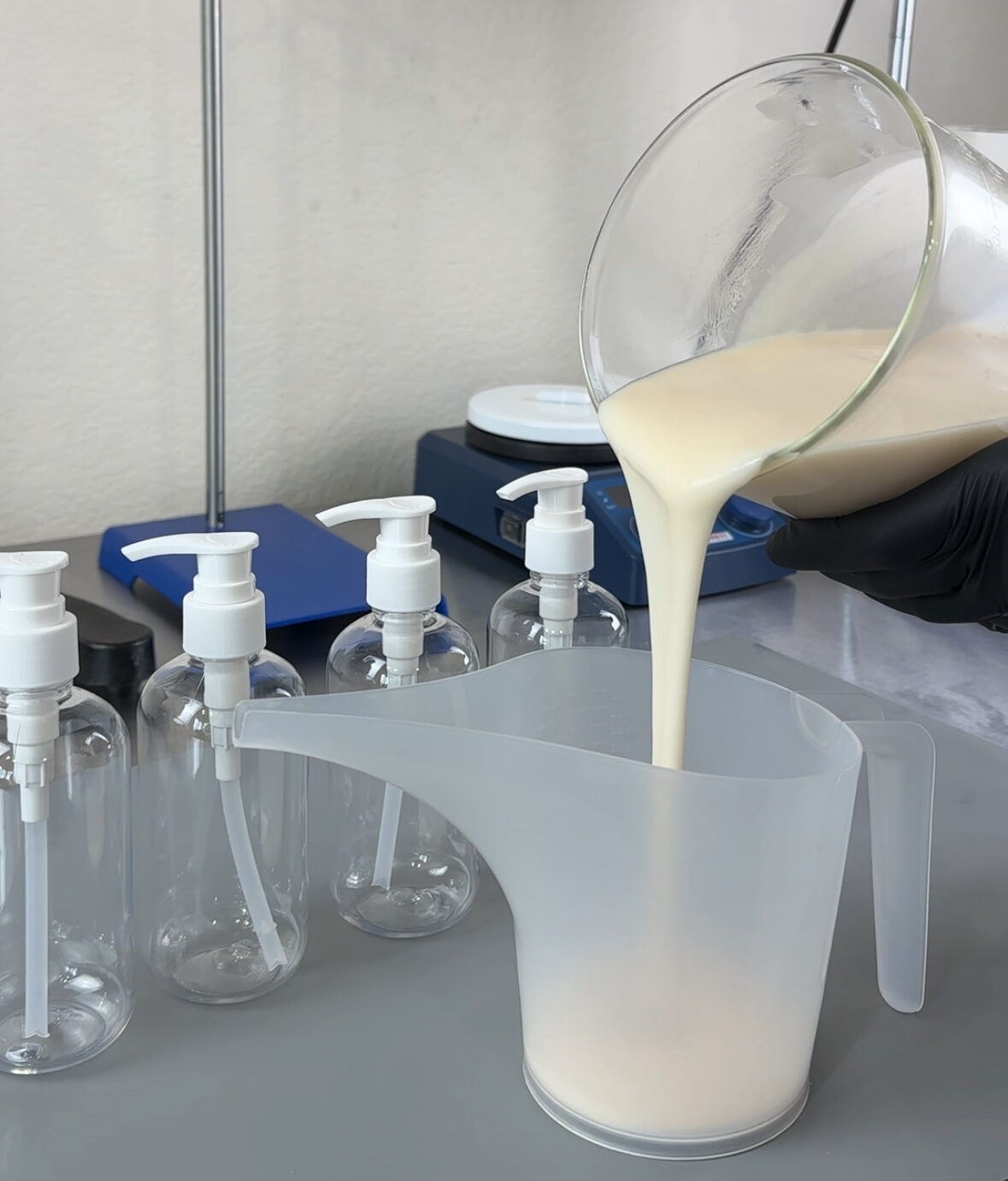Body Wash
Body wash is a body cleansing liquid. It is also called shower gel. Body wash only started to become popular in 1994 in the USA. It was already popular in Europe. It wasn’t until 1994 when Jergens packaged the body wash with a sponge. Using the body wash with this sponge made more lather than using it with a washcloth. In the USA, body wash outsells bar soap. In 2022, almost 600 million body wash units sold compared to almost 210 million bar soap units sold.
The purpose of body wash is to clean and refresh the skin. Body wash lathers and removes dirt, oil, grease, and makeup. Unfortunately, there are many harsh body washes that also disrupts our natural oil, our sebum.
Formulating Body Wash Tips
Here are some tips for formulating a mild body wash.
A body wash should not overly dry and strip the skin of its natural oils. Many body washes are harsh on the skin. Body cleansers, body wash, and soap, easily cause skin sensitivities, dry skin, and disrupt the skin barrier. Surfactants (cleansing agents) are in body wash. Surfactants are a major cause of skin irritation. For example, the surfactant commonly used, sodium laureth sulfate (SLS) is classified as a skin irritant. Surfactants cause skin sensitivities. The skin symptoms include itching, tightness, redness, and flaking,
The modern cosmetic formulator now has access to innovative, sustainable mild surfactants that produce a rich lather and perform without causing skin sensitivity. To formulate a body wash with a rich lather and moisturizing to the skin, you will need mild surfactants, anionic, amphoteric, and nonionic. There are also complete blends available already containing the combination of the anionic, amphoteric, and nonionic surfactants. A body wash can be formulated with only anionic and amphoteric surfactants. You can use only amphoteric and nonionic surfactants but the foam, the lather, won’t be as rich. And the flash foam (the immediate foam as soon as the product is applied) will be lacking.
Additional ingredients to add to your body wash formulation are refatting agents, humectants, moisturizers, hydrolyzed proteins, broad spectrum preservative, plant oils, essential oils or natural fragrance. Lipids (plant oils, butters) are kept at a very low percentage unless a liquid emulsifier is used.
Every ingredient in the body wash formulation affects the color. A liquid emulsifier will turn the body wash to a milky cream look. Extracts can add a beige color to it, which is popular now. For a transparent body wash, don’t use a liquid emulsifier and use clear extracts and essential oils.
The scent is evaluated for how it smells in the container, how it “blooms” when water is applied to it, and the wash off scent. Using a higher percentage of citrus essential oils, the scent can go off and the scent is not appealing. When testing the body wash, take detailed notes on the scent and how the scent evolves in time.
Production Methods
Body wash can be produced by cold process or hot process. Cold process manufacturing, no heating is involved. It is the most ideal way to manufacture body wash. It keeps the production costs down. Hot process manufacturing requires heating to liquefy and blend the ingredients.
Types of Body Wash
- Hydrating
- Nourishing
- Moisturizing
- Sensitive Skin
- 2 in 1 Wash + Shampoo
- Baby
In the Professional Natural Skin Formulation Course there are two superb body wash formulations. These formulations were formulated with green, sustainable mild surfactants. The body wash is cleansing, hydrating, and moisturizing to the skin. After using this body wash, the skin feels refreshed and soft. It is so much easier to learn and use a body wash formulation that is stable, tested, and works. And the ingredients can be sourced in minimum order quantity (MOQ). Then you can easily customize that body wash to your niche, brand, product line.
Watch Formulating Body Wash Tips
References
C.T. Jackson, Marc Paye, and Howard I. Maibach (2014), Handbook of Cosmetic Science and Technology (4th ed.) CRC Press
Happi https://www.happi.com/issues/2013-06/view_features/fresh-clean-50-years-of-soap/
Statista https://www.statista.com/statistics/954921/us-soap-products-unit-sales-by-type/
You might also like



